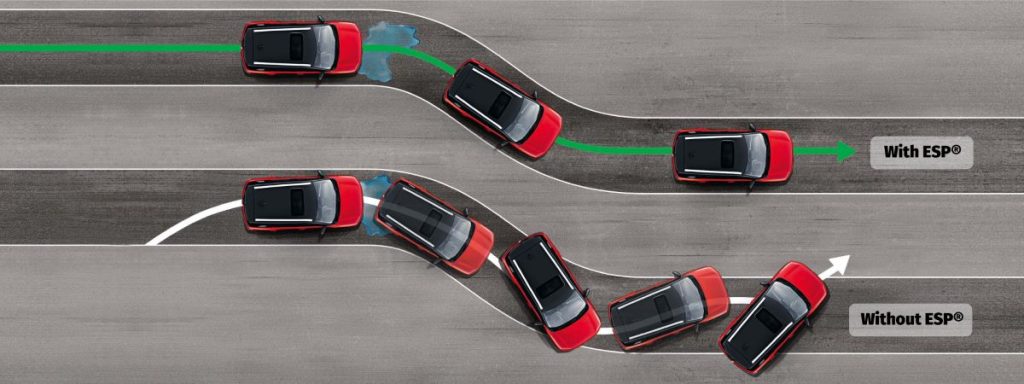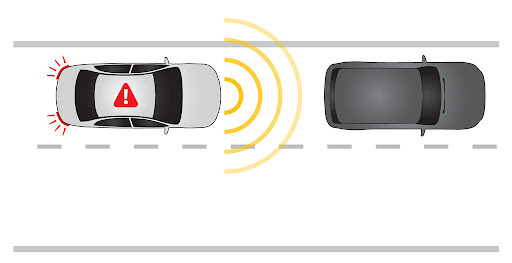Car and road safety has made remarkable progress since the creation of the automobile.
These innovations exemplify how advancements in technology and engineering have revolutionized the way we approach car and road safety, making journeys safer for everyone on the road.
The future of car and road safety promises even more innovations.
One area of interest is the development of advanced driver assistance systems (ADAS) that shift more responsibilities—such as steering and braking—to automated systems. Examples include Tesla’s Full Self Driving (FSD) beta, which is under testing.
While these systems have the potential to make driving safer, their reliability must first be proven to ensure they enhance safety rather than pose risks to drivers and other road users.
Below are ten of the most significant car and road safety innovations developed since the inception of motoring:
1. Seat Belts
Seat belts are arguably the most recognizable safety feature in modern vehicles. They are designed to prevent severe injuries by ensuring that the driver and passengers remain securely in their seats during a collision.
Nils Bohlin, a Volvo engineer, developed the modern three-point seat belt in 1959.

Although protected by a patent, Volvo chose to make the design freely available to all automakers to prioritize public safety.
Australia was at the forefront of implementing seat belt laws. Front-seat seat belts became mandatory in 1969, and by 1971, all seats in vehicles were required to have seat belts. Additionally, the use of seat belts has been compulsory since 1971.
2. Airbags
Airbags are another critical safety feature that offers protection to drivers and passengers during crashes. Designed to deploy instantaneously, airbags cushion the impact of a collision and greatly reduce the risk of serious injuries.

Modern vehicles are equipped with multiple airbags, including driver-side, passenger-side, and side-impact protection. Volvo was the first manufacturer to introduce external pedestrian airbags in 2012.
3. Crash Test Dummies and Ratings
Crash test dummies are vital tools used to assess vehicle safety and develop new safety features. These dummies simulate the effects of a collision on the human body, enabling engineers to analyze crash forces and enhance vehicle safety.

Although crash test dummies have existed since 1949, the first child-sized mannequins weren’t introduced until 1994. Remarkably, it wasn’t until 2022 that the first dedicated female crash test dummy was developed.
4. Anti-Lock Brakes (ABS)
Anti-lock brakes, commonly referred to as ABS, are an essential safety feature that prevents wheels from locking up during heavy braking. This system uses sensors to monitor braking pressure, automatically adjusting it to maintain control of the vehicle and prevent skidding.

Mercedes-Benz was the first automaker to integrate ABS into a production vehicle in 1978 after years of collaborative development with Bosch.
The computer revolution at the time enabled the use of digital technologies capable of recording and interpreting sensor data. By 1984, ABS had become standard on all Mercedes-Benz models, though it took longer to become a feature across all brands and vehicle price ranges.
5. Traction Control
Traction control is a key safety system that helps drivers maintain control of their vehicles on slippery or unstable surfaces.

The system uses sensors to monitor wheel traction and responds by either applying the brakes or reducing engine power when a loss of traction is detected. This ensures that the driver can recover control during situations like sudden acceleration on icy or wet roads.
6. Electronic Stability Control
Electronic stability control (ESC) is an advanced safety feature designed to help prevent skids and maintain control of the vehicle while cornering.

This technology uses sensors to monitor the vehicle’s movement and detect when it begins to lose traction. When it senses instability, ESC can automatically apply the brakes or reduce engine power to help the driver regain control of the vehicle and maintain stability.
7. Lane Departure Warning
Lane departure warning (LDW) is an important safety system that monitors a vehicle’s position within its lane.
Using sensors, it detects when a car unintentionally drifts out of its lane without signaling and alerts the driver. This feature can play a critical role in preventing accidents caused by unintentional lane drifting.

Lane departure warning systems vary in their response. Some use audible alarms to alert the driver, while others integrate haptic feedback through the steering wheel or actively steer the vehicle back into its lane to ensure the car remains properly positioned.
8. Blind Spot Monitoring
Blind spot monitoring (BSM) is another advanced safety feature equipped with sensors to detect vehicles in a driver’s blind spot—the area that cannot be directly observed by the driver in standard mirrors.

When another vehicle is detected in the blind spot, the system alerts the driver to prevent collisions during lane changes. Blind spot monitoring can also work in combination with lane-keeping assistance systems to enhance overall vehicle safety.
9. Automatic Emergency Braking
Automatic emergency braking (AEB) is a vital safety system that uses sensors to identify when a collision is imminent. When it detects a potential crash, AEB can automatically apply the brakes to either prevent the collision entirely or reduce its severity.
This technology has proven effective in minimizing accidents and improving overall road safety.

AEB systems are becoming increasingly advanced, with specialized systems like car-to-pedestrian AEB expected to become mandatory in Europe from 2024.
These systems are likely to become more common in other regions, including Australia, as safety standards evolve.
10. Intelligent Speed Assistance
Intelligent speed assistance (ISA) has sparked some debate and controversy. This technology uses cameras, GPS, and mapping data to determine the current speed limit and alert drivers when they are exceeding it.
It became a mandatory feature for all new vehicles in the European Union starting in July 2022.
The controversy surrounding ISA stems from concerns that it reduces driver control, particularly in situations like overtaking, where briefly exceeding the speed limit could enhance safety.

Critics argue that outdated mapping data, inconsistent speed limit signs, or unclear visibility could make these systems less reliable.
Currently, most intelligent speed assistance systems can be easily overridden, and many only provide auditory warnings to increase driver awareness of their speed without enforcing strict limits.
Despite the debate, these systems aim to promote safer driving habits by helping prevent accidental speeding.

